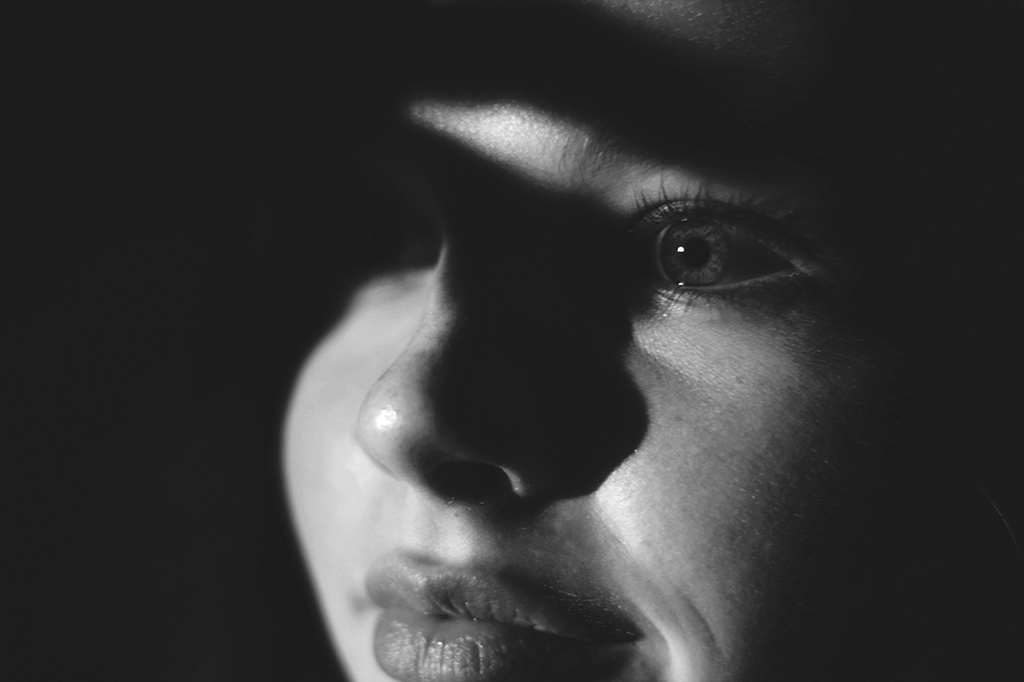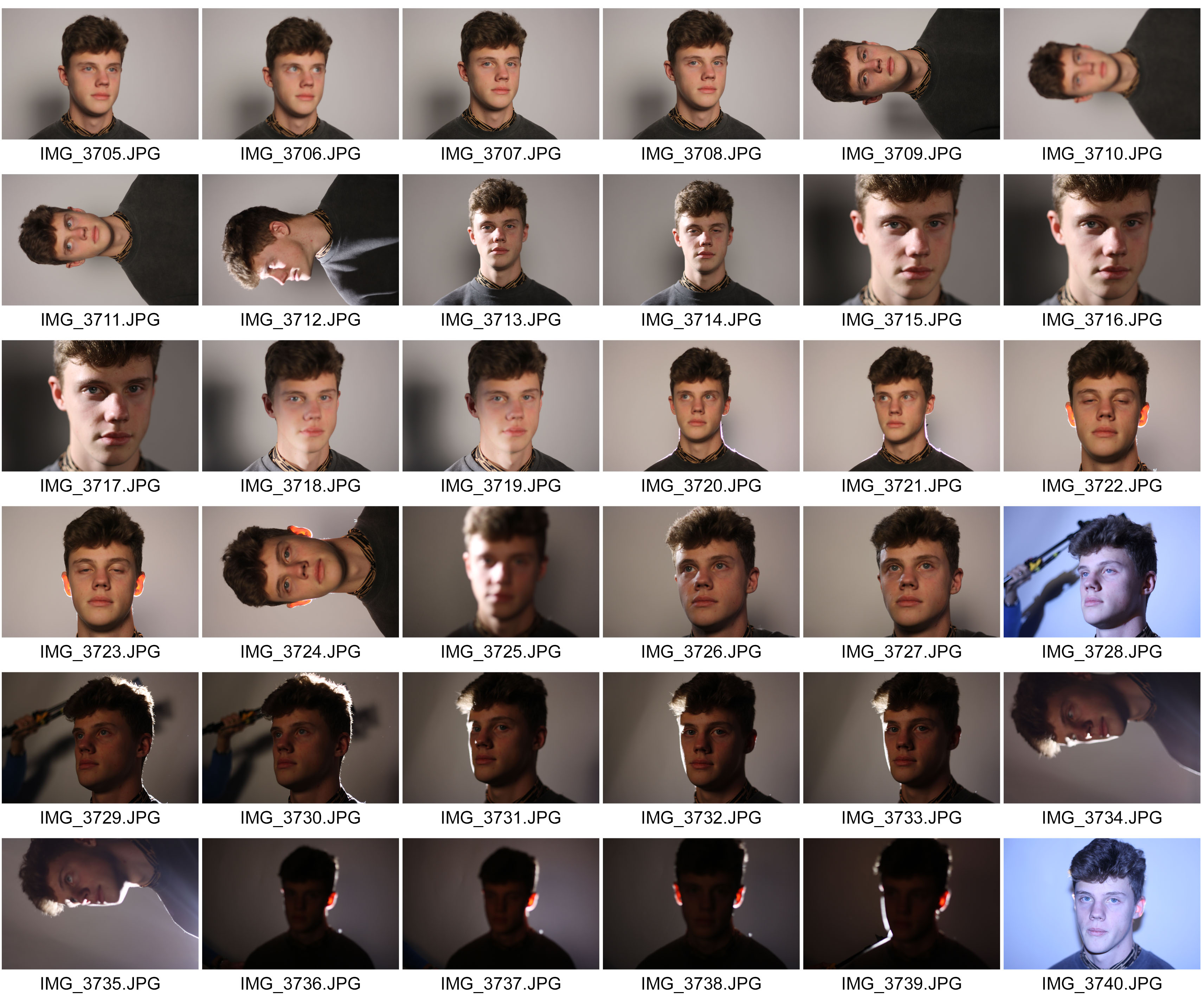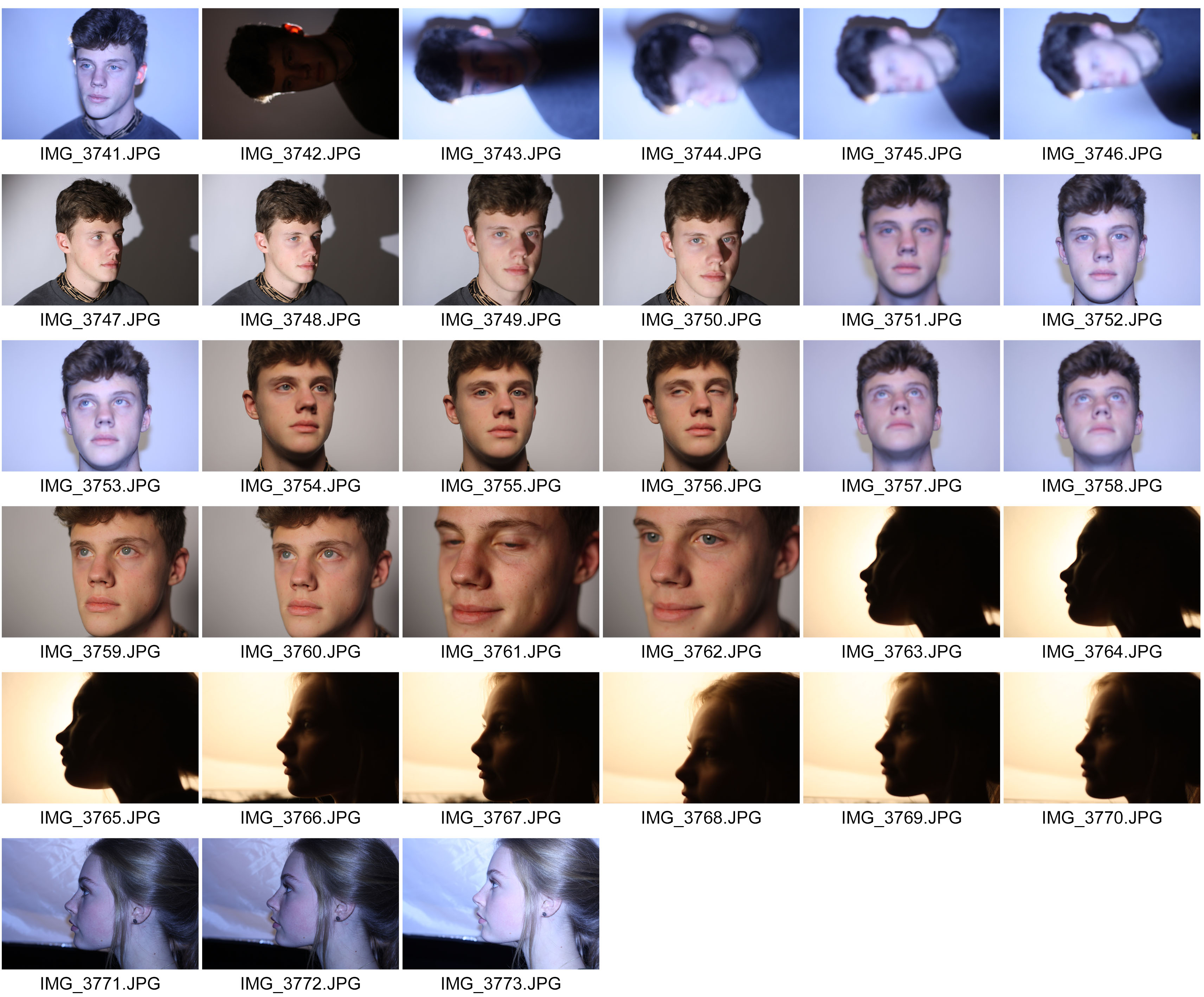Soft light is when a light source is large compared to the subject, hard light is when the light source is small relative to the subject. This depends mostly on the following factor: Distance. The closer the light source, the softer it becomes.
Hard Light – “Hard light sources cast shadows whose appearance of the shadow depends on the lighting instrument. That is, the shadows produced will have ‘harder’ edges with less transition between illumination and shadow.” An example of a Hard Light would be a spot light or a direct flash.
Hard light is light without diffusion. This makes it a smaller light source. A small light source will create a harder light. When you photograph in a hard light situation you are going to have strong shadows. Which can be good for some photos, but bad for others.
For our Shoot using Hard Light to create shadows, we used a continuous spot light. We also experimented with different colors by placing transparent sheets of red paper in front of the light source.


Here is my favorite image from the Hard Light Shoot. The Light that has not been diffused aloud’s strong clear Shadows to form around the features of her face. I like the clear contrast between the light and the dark. The black and white helps to improve the contrast.

Soft Light- “Light that tends to “wrap” around objects, casting diffuse shadows with soft edges. Soft light is when a light source is large relative to the subject.” An example of Soft Light is a light with a shade or indirect light.
The key to soft light is the diffusion. Diffusing any light source with some type of white fabric that light can pass through will produce softer light. Diffusing the light source makes the light source larger and softer. The general rule for soft light is that the larger the light source is the softer it is.


Here is my favorite image from the Soft Light Shoot. The Light has been diffused and therefore there are less shadows that have been produced. However there is still a slight shadow on the Left side of his face.

